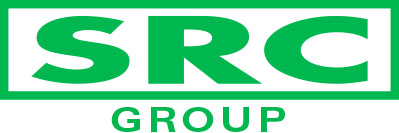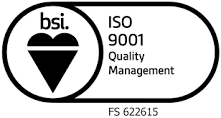Information
-
Audit Title
-
Document No.
-
Client / Site
-
Conducted on
-
Prepared by
-
Location
-
Personnel
Previous Audit Report
-
Is the last audit available?
-
Have all previous issues been cleared?
Management Controls
-
Check employers and public liability insurance certificates are valid and on display.
-
Have appropriate signs/notices been erected around the site i.e. mandatory use of PPE, Incomplete Scaffolds, No Smoking, Traffic Management, Fire assembly, Fist Aid Points etc.
-
Ensure a new style Accident Book (which complies with the Data Protection Act) is provided on site and is available to all personnel
-
Ensure that all persons are familiar with the requirements of the site safety rules and that they are complied with on site.
-
Ensure all contractors have been provided with information relating to Health & Safety for the work they are undertaking.
-
Ensure site safety rules are displayed in a prominent position e.g. reception, canteen, site office etc.
-
Ensure all subcontractors have been assessed and are adequately resourced and competent for the work they are undertaking.
-
Ensure all site operatives, including sub-contractors have valid certification.<br>
-
Management controls compliant and effective?
Access and Egress
-
Is there safe access and egress to all working areas of the site?
-
Have pedestrian walkways been provided to protect them from moving vehicles?
-
Are walkways free from obstructions and stored materials?
-
Are access routes adequatelly lit?
-
Access and Egress compliant?
Access - External
-
Ensure site access points are clearly signposted on the approaches to the site.
-
Ensure adequate on-site signage is provided to warn and advise both vehicle drivers and pedestrians.
-
Ensure that adequate lighting is provided, including flashing amber warning beacons where appropriate.
-
Ensure any floodlights do not dazzle drivers on the site or on adjacent public/private roads.
-
Ensure any lighting does not cause a nuisance to local residents.
-
Ensure that there is always a clear access route to and from all parts of the site.
-
Ensure the approaches to the site are kept clear of site traffic.
-
Has any parking of contractors vehicles on the approach roads been agreed with the Highways Authority?
-
Ensure approach roads are kept clean and tidy and that any debris is removed promptly.
-
Ensure there are suitable barriers and warning notices to keep members of the public separated from the site works and site traffic.
-
Ensure safe pedestrian access is provided across all site entrances.
-
Where work at height is carried out adjacent to the public highway/footpath ensure that protective fans or other measures are provided to safeguard members of the public.
-
Ensure the site is securely fenced at all times to prevent unauthorised access.
-
Ensure all public access routes are kept clean and clear at all times.
-
Ensure adequate signage is provided to direct members of the public.
-
External Access Compliant?
Asbestos Management
-
Has an asbestos survey been carried out in accordance with HSG264?
-
Has a detailed risk assessment and method statement been carried out?
-
Have the results been communicated to relevant parties?
-
Asbestos Management Compliant?
Compressed Gasses (e.g. LPG, Acetylene, Propane)
-
Are they kept away from flammable liquids?
-
Are the properly stored in a purpose made cage?
-
Are gasses segregated by type?
-
Is the cylinder valves fully closed when not in use?
-
Do all lines have anti-flashback arresters fitted (except for LPG fired blow heaters/torpedo heaters?
-
Do all line connections only have approved fittings and clips, with no Jubilee clips?
-
Compressed gasses compliant?
Confined Spaces
-
Confined Spaces include manholes, shafts, pits/tanks, pipes/culverts, certain excavations, silo's and Mixer drums other confined/enclosed spaces.
-
All confined spaces work is subject to a Hazard Assessment, Safe System of Work and Permit To Work.
-
Only appropriately trained and qualified persons who have undergone a confined spaces entry training shall be permitted to enter a confined space, and only then if the correct checks have been made and the correct safety equipment (breathing apparatus, gas detection equipment, emergency escape equipment etc) are used.
-
Is there a risk assessment for the confined spaces work?
-
Ensure all confined space permits have been checked, are valid and being strictly enforced.
-
Controls should include atmospheric monitoring, emergency escape arrangements, adequate supervision (i.e.: a top man outside of the confined space), method of raising the alarm and safe access/egress etc.
-
Check permits are closed and cancelled upon completion of the works.
-
Confined Spaces compliant?
Consultation
-
Has a system been established for employees to comment and be consulted on health, safety and welfare issues.
-
Is there a safety joint committee / forum ?
-
Are minutes and actions from meeting available and published on site?
-
Are any actions being implemented ?
-
Ensure appropriate Tool Box Talks are given to all employees and that the Tool Box Talks are appropriate and relevant to the work being undertaken.
-
Ensure that an attendance register has been maintained and signed by all persons present at each Tool Box Talk.
-
Consultation compliant?
Control of Substances Hazardous to Health (COSHH)
-
Have COSHH Assessments been carried out for all potentially hazardous materials and substances being used on the site.
-
Are material safety data sheets available to assist with COSHH assessments.
-
COSHH data sheets are on the company intranet in 'G' drive 'Health and Safety Documents 2013 Onwards'
-
Have the hazards associated with the use of such materials been properly communicated to those affected.
-
Are alternative safer substances available which can be used as substitutes.
-
Ensure all dangerous/hazardous materials/Substances are clearly marked/identified and stored in a secure location appropriate to the substance.
-
Have the appropriate control systems and PPE been provided and is the PPE being used.
-
COSHH Compliant?
Electrical Equipment
-
Ensure that existing services e.g.: electricity cables, gas mains etc have been identified and effective steps have been taken to prevent danger from them.
-
Check that low voltage tools and equipment are being used wherever possible.
-
Check that only 110v hand tool etc are in use.
-
Check that cables and leads are protected from damage.
-
Check all connections are properly made and suitable plugs are used.
-
Check that tools and equipment are visually checked and regularly inspected/tested by a competent person. (PAT)
-
Ensure that cables and trailing leads are not trip hazards.
-
Ensure that suitable and sufficient task lighting is provided to enable operatives to safely carry out their work.
-
Electrical Equipment compliant?
Environmental Management
-
Site wide issues
-
Is there any evidence of nesting birds, if so are protection measures adequate ?
-
Is there any evidence of invasive plants, if so are precautions adiquate?
-
Note - it is an offence to propagate or cause to spread Japanese Knotweed, Giant Hogweed, Ragwort and Himalayan Balsam.
-
Energy efficiency
-
Have all practical measures been implemented to increase the energy efficiency of the site.
-
Do all Cabins comply with environmental minimum standards?
-
Environmental Emergency
-
Is an Emergency Plan in place?
-
Evidence of ongoing review?
-
Is it tried and tested?
-
General Environmental Management
-
Are environmental guidance notes available on site?
-
Are any concrete washout facilities suitable?
-
Are any consents required?, if so are they being monitored and complied with?
-
Is a local drainage plan available on site?
-
Are any noise/dust issues present and are they being suitably controlled?
-
Are weekly environmental checks taking place?
-
Local Community
-
Is there a complaints procedure in place?
-
Is plant and equipment fitted with suitable and effective silencers?
-
Environmental Registers
-
Is the environmental register up to date and relevant?
-
Is the site registered under the hazardous waste regulations?
-
Is an Aspects & Impacts register in place - risk prevention measures identified etc.?
-
Spill Response
-
Are spill kits available?
-
Located in the correct areas?
-
Staff and operatives aware of their location?
-
Have emergency drills taken place?
-
Are the contents regulary checked?
-
Working on or near water
-
Are consents in place?
-
Is any silty water being treated or disposed of to foul?
-
Are appropriate pollution prevention measures in place and adequate?
-
Are soil heaps located away from rivers/streams?
-
Environmental Management compliant?
Fire Risks and Management
-
Ensure that the quantity of flammable materials, liquids and gases are kept to a minimum and are adequately stored.
-
Is there a fire risk assessment in place?
-
Ensure there are emergency procedures for evacuating the site in case of a fire, flood, explosion etc.
-
Ensure all staff know what these procedures are and that they form part of the site induction.
-
Check that there is an adequate means of raising the alarm, and that it is regularly tested.
-
Ensure that there are adequate escape routes and that these are kept clear of obstructions.
-
Ensure that smoking and other ignition sources are banned in areas where gases or flammable liquids are stored or used.
-
Check that flammable and combustible waste is removed regularly and stored in suitable bins and skips.
-
Check that suitable fire extinguishers are provided and that they are maintained and in a good condition.
-
Check that all fire extinguishers have had an annual inspection.
-
Fire Risk and Management compliant?
First Aid
-
An appropriate number of trained and qualified first aiders should be available on the site.
-
Check the number of first aiders required, this is dependent on the type of work or operations, the number of workers on site and any special or unusual hazards.
-
Are the names of all first aiders detailed on the site notice board?
-
All first aiders should be clearly identified on site through the use of an appropriate helmet sticker.
-
Ensure the first aid kit contains only first aid materials.
-
The location of the first aid box should be indicated on the site notice board and the door of the room in which it is contained. Are they clearly indicated?
-
Signs directing persons to the site of the first aid book should also be provided.
-
The First Aid box should be;
-
Marked with a white cross on a green background.
Be placed where it can be seen and used.
Be checked and replenished on a regular basis. -
Are new staff made aware of its location as part of their induction?
-
First Aid requirements compliant?
Housekeeping
-
Ensure staff adopt the philosophy of 'A tidy site is a safe site'.
-
Ensure all debris and waste is removed from the work area upon completion of the work or at the end of each shift.
-
Ensure Debris is not be allowed to collect around the site.
-
Ensure materials are stored in an appropriate manner so as not to cause damage to or a weakening of the material.
-
Are All hazardous/flammable liquids contained within a bundled area/tank?
-
Ensure all waste receptacles are are appropriately signed for their intended contents.
-
Housekeeping compliant?
Health & Safety Management Plan
-
Ensure the management plan is up to date and signed by all relevant parties.
-
Is an emergency plan defined and in place complete with emergency contact numbers?
-
Is the plan meaningful and communicated to all parties, including sub contractors?
-
Are responsibilities defined?
-
Health and Safety Management Plan compliant?
Induction
-
Ensure all staff receive a site specific safety induction before starting work.
-
Ensure the safety induction is regularly reviewed and updated to take account of changes in site conditions etc.
-
Are all visitors being inducted?
-
Are site safety inductions being adequately carried out both for staff and visitors?
Manual Handling
-
Ensure that a manual handling risk assessment has been completed wherever regular lifting of heavy loads is required.
-
Check the suitability of using wheelbarrows, hoists, telehandlers and other plant or machinery so that manual handling of heavy objects is kept to a minimum.
-
Ensure all staff have received manual training.
-
Manual Handling compliant?
Mobile Scaffold Towers
-
Are mobile towers used on site?
-
Check that proprietary tower scaffolds have been erected and are being used in accordance with the suppliers instructions.
-
Check that the wheels of any tower scaffold have been locked when in use and check that the platform is empty when being moved.
-
Are they tagged safe for use?
-
Mobile Towers compliant?
Occupational Health, HAV'S, Noise and Associated Health Risks
-
Check that workers have had information and training so that they know what the risks are from HAV.
-
Check that exposure to HAV has been reduced as much as possible by selecting suitable work methods and Plant.
-
Ensure reduced-vibration tools are used wherever possible.
-
Check vibration tools are properly maintained.
-
Check whether health surveillance for people exposed to high levels of hand-arm vibration over long periods is in place.
-
Limit the exposure of persons to HAV by ensuring that no person uses vibrating tools for longer than the manufactures guided times.
-
Noise - As a general rule, if you: - have to shout to be heard at a distance of 2m, the noise level is approx 85dB and you should consider wearing hearing protection.
-
- have to shout to be heard at a distance of 1m, the noise level is approx 90dB and you should definitely wear hearing protection.
-
Ensure that workers have had training so they are aware of the risks from noise on site and what they need to do to avoid these risks.
-
Check whether the noise can be reduced by using different working methods or selecting quieter plant e.g.: by fitting breakers and other plant or machinery with silencers.
-
Preventative maintenance can also help to reduce the noise caused by wear and tear on plant and machinery.
-
Ensure that people not involved in the work are kept away from the source of the noise.
-
Occupation health, HAV'S, Noise and associated risks compliant?
Permits to Work
-
Hot Works - Hot Works include welding, oxy-acetylene cutting, use of angle grinders/skill saws etc.
-
Ensure all Hot Works Permits have been checked and reviewed and are valid for the work conditions.
-
Ensure suitable and sufficient fire prevention measures are in place, including the removal of all combustible materials, the use of fire blankets and fire extinguishers.
-
Ensure old permits have been cancelled and closed.
-
Ensure all contractors are working in accordance with permits.
-
Ensure the permit is valid.
-
Check old permits have been cancelled and closed.
-
Permits compliant?
Personal Protective Equipment (PPE)
-
PPE General Requirements - Ensure PPE compatibility issues have been considered and that one piece of PPE not restrict the effectiveness of another piece of PPE.
-
Ensure that PPE is issued on an individual basis.
-
Ensure that it is suitable for the type of work being undertaken.
-
Check that the PPE is marked with the genuine 'CE' mark to help identify type of protection.
-
Check that it is kept in good condition.
-
Ensure that it is appropriately replaced.
-
Ensure all staff and visitors are wearing Hi-Viz vests or jackets.
-
Eye Protection
-
Ensure that it is of a suitable grade for the type of work being undertaken. I.e. light protection or full goggle etc.
-
Check that it is kept in good condition.
-
Foot Protection
-
Ensure that footwear is manufactured to CE standards.
-
Ensure that footwear is fitted with steel toecaps and steel sole plates.
-
Hand Protection - Ensure that where damaged to the hands may occur through activities such as handling, or when using hazardous substances/chemicals that all persons affected wear the appropriate class of safety glove.
-
Are all gloves free from damage?
-
Ensure gloves are the correct size.
-
Ensure gloves are correct for their application and the activity being undertaken.
-
Check that hands are washed frequently after spells of work.
-
Check the availability of barrier creams and skin cleansers.
-
Hearing Protection
-
Ensure the correct type of protection is in use for the task.
-
Ensure that hearing protection is used as instructed.
-
Where ear plugs are in use ensure the correct size ear plugs are being worn.
-
Ensure that hearing protection is kept clean and checked regularly for damage.
-
Ensure Areas which are mandatory hearing protection zones are signed as such using the appropriate signs.
-
Respiratory Protection (RPE) - Avoid the use of nuisance dust masks.
-
Ensure that the correct type of respiratory equipment is used for the works being undertaken.
-
Ensure that persons are trained for the use of the RPE and where applicable have a face fit test to ensure the effectiveness of the RPE.
-
Ensure that all equipment is cleaned and checked after use.
-
Safety Helmets
-
Ensure all staff and visitors are wearing safety helmets.
-
Were all helmets found free from damage?
-
Ensure helmets are worn correctly.
-
Were helmets within their expiry date - helmets should be changed every 2-3 years.
-
PPE requirements compliant?
Plant & Equipment
-
Ensure that tools and equipments are stored correctly to avoid damage to the equipment and persons.
-
Hand tools
-
Ensure that the right tools and equipment are being used for the right job.
-
Were all hand tools found to be in good condition with no defects?
-
Power Tools
-
Ensure operatives have been trained to use the tools/equipment they are using.
-
Check that all dangerous parts are guarded e.g. gears, chain, drives, projecting engine shafts etc.
-
Check that guards are secure and in good repair.
-
Ensure that the tools are in a good state of repair and carries appropriate safety symbol e.g. BS kite mark, CE Mark etc.
-
Check that safety devices are operating properly and that all cables are double insulated.
-
Check that tools are 110 volt and that a residual current device (RCD) is used for additional protection.
-
Ensure that the plug is of the correct type, undamaged and securely clamped to the cable.
-
Check the supply cable for cuts, splits or other damage. All all cables free from damage?
-
Ensure that all operators are trained and competent.
-
Mobile Plant
-
Ensure all Mobile Plant and Machinery is inspected on a daily basis by a competent person and recorded in a Plant Inspection Register.
-
Are all plant operators trained and hold a valid plant operators card/licence/certificate for the categories being operated?
-
Is Plant Used Correctly.
-
Plant and Equipment compliant?
Registers and Records
-
Check the site Inspection Registers including mobile plant have been completed in a timely fashion.
-
Registers and Records compliant?
Risk Assessments and Method Statements
-
Ensure all Method Statements have been prepared by a competent person and have been checked, reviewed and signed.
-
Are method statements adequate and suitable for the task?
-
Does the method statement offer the necessary controls and required level of protection?
-
Ensure all contractors are working in accordance with their method statement.
-
Risk Assessments and Method Statements compliant?
Security
-
Are the public fenced off or otherwise protected from the work?
-
Is the perimeter fence secure and un-damaged?
-
Are all gated secured?
-
Are site security arrangements sufficient?
Site (general requirements)
-
Are the following items displayed?
-
Latest H&S Policy?
-
Insurance Policy?
-
Fire Plan?
-
Emergency plan and contacts?
-
First aid location signs?
-
Assembly point signs?
-
Accident reporting process?
-
No Smoking signs?
-
Health & Safety Law poster ( what you should know)?
Storage of Substances, Chemicals and Oils.
-
Are Substances, Chemicals and Oils stored in the correct manner?
-
Is there double bundled storage with at least 110%?
-
Are oil storage tanks at least 10m from any water course?
-
Were any/all drums stored off bare ground?
-
Is plant and equipment in good order and free from leaks etc?
-
Storage of Substances, Chemicals And Oils compliant?
Traffic Management
-
Has a traffic management plan been prepared?
-
Are traffic management arrangement suitable and sufficient ?
-
Are pedestrians segregated from moving vehicles and plant?
-
Does the site layout match the plan?
-
Are storage areas identified?
-
Have one way or turning points been identified?
-
Are seat belts being used?
-
Are traffic management arrangement sutable?
Training and Skill Cards
-
Are all persons trained for their respective tasks?
Waste Management
-
Is a waste management plan in place and sutable?
-
Is the plan being maintained?
-
Is it being reviewed on a regular basis?
-
Are bins clearly labelled?
-
Are all waste carries and transfer stations records available?
-
Are waste transfare notes available and correctly filled in?
-
Waste management requirements compliant?
Welfare Facilities
-
Ensure a facility is provided to change, dry and store clothing.
-
Mess facilities should include a place where workers can sit, make hot drinks and prepare food.
-
Mess facilities shall be of sufficient size for the number of employees on site and are provided with heating.
-
Ensure access to the welfare facilities are accessible to all persons on the site.
-
Ensure a supply of wholesome drinking water and cups are provided.
-
Ensure sufficient toilets are readily available, maintained, kept clean & are properly lit.
-
Note - A connection with mains drainage is always preferable to that of a chemical toilet.
-
Are toilets connected to the main sewer?
-
Ensure there are washbasins, hot and cold running water, soap and towels.<br>
-
Ensure that the washbasins are large enough to wash up to the elbow and are kept clean.<br>
-
Where the nature of the work demands it, showers shall be provided.
-
Are showers provided?
-
Are welfare facilities clean?
-
Are welfare facilities compliant?
Working at Height
-
Check whether the work can be undertaken without working at height.
-
Check that access equipment is erected by competent persons and checked before use.
-
Ensure safe access and egress have been provided to areas.
-
Ensure roof ladders are used in accordance with best practice requirements.
-
Ladders - Ladders should be used at an angle of 1:4 (75 degrees).
-
Ensure that ladders are in good condition, are not split, warped or have damaged rungs etc.
-
Check whether ladders are suitable for the purpose - only for short term work or for gaining access to another area.
-
Are work at height operation in accordance with the W@H Regulations?
Working on or near Water
-
Check all access passages and working platforms are clear and free from obstructions.
-
Ensure that buoyancy/life saving equipment is available and accessible.
-
Ensure workers know how to raise the alarm and that they are aware of the procedures are in place if an incident in water occurs.
-
Are working on or near water compliant?
Other
Summary
Audit Risk Level
-
Risk rating for this Audit.
Corrective Actions
-
Non conformances to be closed out by;
Sign off
-
I confirm I have had the contents of this audit report explained to me.
-
Site Manager
-
Person conducting this Audit.
-
Audit concluded at:
Closure
-
All actions on this report have been completed on:















